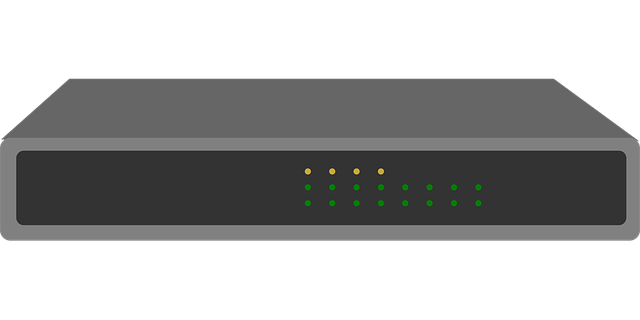Contextual link suggestions plugins enhance SEO by intelligently placing internal links within content based on context. This strategy improves user experience, boosts site visibility, and optimizes keyword rankings by seamlessly integrating related pages. Especially in FAQs and glossaries, these plugins ensure terms are connected to relevant content, reducing bounce rates and increasing engagement, ultimately improving UX and SEO performance through strategic linking.
Internal linking is a powerful SEO strategy that can significantly enhance your website’s visibility and user experience. This article explores the art of optimizing FAQs, glossaries, and more with internal links. Learn how contextual link suggestions from plugins can improve site navigation, boost rankings, and provide valuable context to search engines. Discover best practices for strategic placement, ensuring every click leads to a clearer, more engaging journey through your digital landscape.
- Unlocking SEO Potential: Internal Linking Power
- Contextual Links: Plugin's Role in Optimization
- FAQ Clarity: Navigating with Internal Links
- Glossary Terms: Enhancing User Experience
- Strategic Placement: Optimal Link Suggestions
- Boosting Rankings: Internal Linking Best Practices
Unlocking SEO Potential: Internal Linking Power

Internal linking is a powerful tool that can significantly enhance your site’s search engine optimization (SEO) strategy. By strategically connecting relevant pages within your website, you unlock a range of benefits that contribute to improved search rankings and user experience. One effective approach is to utilize a contextual link suggestions plugin, which provides valuable insights and automated recommendations for internal links based on the content on your pages.
This technique allows you to create a seamless network of interlinked pages, guiding users and search engines alike. When done right, contextual linking optimization ensures that each internal link adds value by providing relevant information or related resources. Such a structured approach not only improves navigation but also signals to search engines the importance and relevance of specific pages, leading to better indexing and increased organic reach through a contextual link suggestions tutorial.
Contextual Links: Plugin's Role in Optimization

Contextual links are a powerful tool in any content strategy, and their importance cannot be overstated, especially when it comes to contextual link suggestions plugins. These tools play a pivotal role in enhancing SEO optimization by facilitating the placement of relevant internal links within your content. By offering intelligent suggestions tailored to each paragraph or section, they ensure that users and search engines alike can navigate your website with ease.
A contextual link suggestions plugin acts as a guide, recommending links to related pages based on the context of the current article. This not only improves user experience but also boosts your site’s SEO. A well-optimized contextual linking strategy helps search engine algorithms understand the relationships between pages, leading to better indexing and increased visibility for relevant keywords in your content.
FAQ Clarity: Navigating with Internal Links

Effective FAQ pages or SEO glossaries rely on clear navigation to enhance user experience and improve search engine rankings. Internal linking plays a pivotal role in achieving this clarity, acting as a map within your website’s knowledge base. By integrating contextual link suggestions plugins, you can seamlessly weave relevant links throughout these sections, guiding users and search engines alike.
This strategy ensures that each term or question is not an isolated entry but part of a connected web. For instance, a user asking about “SEO best practices” in the FAQ could be linked to other related entries like “Keyword optimization tutorial” or “On-page SEO strategies.” This contextual link suggestions optimization fosters a logical flow of information, encouraging users to explore further and reducing bounce rates. Such an approach not only benefits visitors but also signals to search engines that your content is comprehensive and worthy of higher rankings.
Glossary Terms: Enhancing User Experience

In an FAQ or SEO glossary section, defining internal linking isn’t just about search engine optimization; it’s also about dramatically enhancing user experience (UX). Each term in your glossary should be a node in a network that connects related concepts seamlessly. This is where a contextual link suggestions plugin steps in as a powerful tool. By suggesting relevant internal links based on the content context, these plugins optimize not just for SEO but also for UX. Users can explore related information without leaving the page, fostering a more engaging and intuitive experience.
Contextual link suggestions optimization isn’t merely about strategic placement; it’s about understanding user behavior and intent. A well-executed contextual link suggestions strategy ensures that each glossary term points to content that answers a user’s question or satisfies their curiosity. This not only aids in information retrieval but also encourages deeper exploration of your site, leading to longer session durations and lower bounce rates—key metrics for both UX and SEO success.
Strategic Placement: Optimal Link Suggestions

Internal linking plays a strategic role in SEO, especially when it comes to FAQs or glossary sections. One of the key aspects is strategic placement, where relevant contextual link suggestions are seamlessly woven into the content. Using a contextual link suggestions plugin can aid in identifying and placing optimal links that align with the user’s journey through the site. By integrating these plugins, content creators can ensure that each term or question in FAQs has targeted links to related content, enhancing the overall user experience.
When implementing this strategy, it’s essential to consider both the relevance and placement of internal links. Contextual link suggestions tips include linking to related but distinct pages, providing users with a diverse navigation experience. For instance, if discussing a specific term in the glossary, offer links to other terms that share common themes or concepts. This contextual approach not only improves user engagement but also signals search engines about the interconnectedness of your content, boosting SEO performance.
Boosting Rankings: Internal Linking Best Practices

Internal linking is a powerful strategy to boost rankings and enhance user experience, making it an essential component of any SEO glossary or FAQs section. By utilizing contextual link suggestions plugins, website owners can efficiently optimize their content. These tools provide valuable tips and strategies for integrating relevant internal links naturally within your text. The key lies in creating a strategic link-building process that guides users through your site while also signaling search engines about the relevance and quality of your pages.
Contextual link suggestions optimization involves placing links where they add value to the reader’s journey, without appearing forced or spammy. This strategy ensures that your internal linking is not just about improving rankings but also about fostering a seamless user experience. By following these contextual link suggestions tips, you can create a structured network of pages, encouraging visitors to explore more content and ultimately increasing the time they spend on your site.
